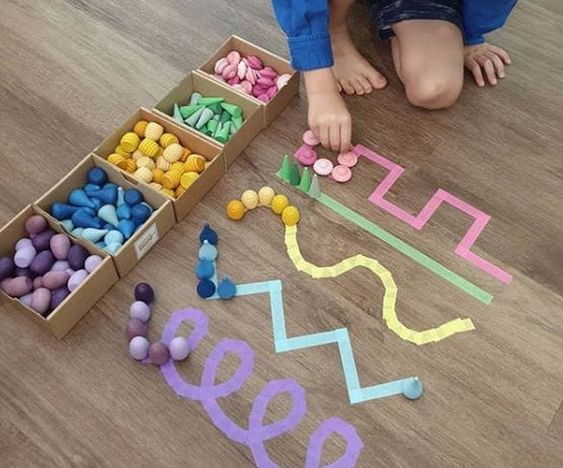
Outdoor exploration is a vital component of a child’s early childhood development. It provides numerous benefits for their physical, cognitive, and emotional well-being. Spending time in nature allows children to engage in hands-on learning experiences, develop their problem-solving skills, and foster a connection with the natural world. In this article, we will explore the various benefits of outdoor exploration for children’s development and discuss strategies for incorporating nature-based learning activities into the curriculum.
The Benefits of Outdoor Exploration for Children’s Development
Spending time in nature has numerous benefits for children’s development. Firstly, it promotes physical health and well-being. Outdoor activities such as running, climbing, and playing sports help children develop their gross motor skills, coordination, and balance. Additionally, exposure to natural sunlight provides children with essential vitamin D, which is crucial for bone health and immune function.
Outdoor exploration also enhances cognitive development. Nature-based activities stimulate children’s curiosity and encourage them to ask questions and seek answers. For example, exploring a forest can lead to discussions about different types of trees, animals, and ecosystems. This type of hands-on learning helps children develop critical thinking skills, problem-solving abilities, and scientific inquiry.
Furthermore, spending time in nature has emotional benefits for children. Research has shown that being in natural environments reduces stress levels and improves mood. Nature provides a calming effect on the mind and allows children to relax and unwind from the pressures of daily life. Additionally, outdoor exploration promotes creativity and imagination as children engage in unstructured play and create their own games and stories.
How to Incorporate Nature-Based Learning Activities into Your Curriculum
Incorporating nature-based learning activities into the curriculum is a great way to enhance children’s educational experience. There are various ways to integrate outdoor exploration into different subject areas.
In science, teachers can take students on field trips to local parks or nature reserves to observe plants, animals, and ecosystems in their natural habitats. Students can also conduct experiments outdoors, such as testing water quality or studying the life cycle of insects. These hands-on experiences allow children to apply scientific concepts learned in the classroom to real-world situations.
In language arts, teachers can encourage students to write nature journals or create stories inspired by their outdoor experiences. They can also incorporate nature-themed literature into their reading assignments, such as books about animals, plants, or environmental issues. This not only improves literacy skills but also fosters a love for nature and environmental awareness.
In math, teachers can use outdoor exploration to teach concepts such as measurement, geometry, and data analysis. For example, students can measure the height of trees or collect data on the number of different types of birds they observe. They can also use natural materials like leaves or rocks to explore patterns and shapes.
Creating Safe and Stimulating Outdoor Learning Environments
Creating a safe and engaging outdoor learning environment is essential for children’s well-being and educational experience. Here are some tips for creating such an environment:
1. Conduct a risk assessment: Before taking children outdoors, it is important to assess the potential risks and hazards in the environment. This includes checking for dangerous plants, uneven terrain, or bodies of water. By identifying and mitigating risks, you can ensure a safe learning environment.
2. Provide appropriate supervision: It is crucial to have adequate adult supervision during outdoor activities to ensure the safety of children. Teachers should establish clear rules and guidelines for behavior and ensure that all children are accounted for at all times.
3. Create designated learning areas: Designate specific areas for different types of activities, such as a gardening area, a wildlife observation area, or a nature art station. This helps children understand the purpose of each area and promotes organization and structure.
4. Incorporate natural materials: Use natural materials such as logs, rocks, or tree stumps to create seating areas or play structures. This not only adds to the aesthetic appeal of the outdoor space but also provides opportunities for open-ended play and exploration.
The Role of Technology in Enhancing Outdoor Exploration
Technology can play a valuable role in enhancing outdoor exploration experiences for children. While it is important to limit screen time and encourage hands-on learning, technology can be used as a tool to enhance outdoor activities. Here are some examples of technology tools that can be used in nature-based activities:
1. Digital cameras: Providing children with digital cameras allows them to capture images of plants, animals, and natural landscapes. They can then use these images to create presentations or digital portfolios of their outdoor experiences.
2. Mobile apps: There are numerous mobile apps available that can enhance outdoor exploration. For example, there are apps that help identify plants and animals, track weather patterns, or provide guided nature walks. These apps can provide additional information and resources to enrich children’s learning experiences.
3. Virtual reality: Virtual reality (VR) technology can provide immersive experiences of different natural environments. Children can explore virtual forests, oceans, or deserts, allowing them to learn about different ecosystems and habitats in a unique and engaging way.
Building Strong Connections with Nature through Outdoor Exploration
Fostering a connection with nature is essential for children’s well-being and environmental stewardship. Here are some tips for helping children develop a love and appreciation for the natural world:
1. Encourage unstructured play: Allow children to engage in unstructured play outdoors, where they can freely explore and interact with their surroundings. This type of play promotes creativity, imagination, and a sense of wonder about the natural world.
2. Provide opportunities for solitude: Encourage children to spend time alone in nature, where they can reflect, observe, and connect with their surroundings on a deeper level. This solitude allows them to develop a sense of peace and tranquility in nature.
3. Teach mindfulness in nature: Introduce mindfulness practices in outdoor activities, such as guided nature walks or nature-based meditation. This helps children develop a sense of presence and awareness of their surroundings, fostering a deeper connection with nature.
4. Engage in environmental conservation activities: Involve children in activities that promote environmental conservation, such as planting trees, cleaning up litter, or participating in community gardening projects. These activities instill a sense of responsibility and stewardship for the natural world.
The Importance of Risk-Taking and Adventure in Outdoor Learning
Taking risks and engaging in adventurous activities in nature is an important aspect of outdoor learning. While it is important to ensure safety and supervision, allowing children to take risks has numerous benefits for their development. Here are some examples of activities that encourage risk-taking and adventure:
1. Climbing trees: Climbing trees allows children to develop their balance, coordination, and problem-solving skills. It also provides a sense of achievement and builds confidence as they overcome challenges.
2. Building forts: Allowing children to build forts or shelters using natural materials encourages creativity, teamwork, and problem-solving. It also provides a sense of adventure and ownership over their outdoor space.
3. Exploring new environments: Taking children to new and unfamiliar environments, such as forests or mountains, allows them to step out of their comfort zones and experience new challenges. This promotes resilience, adaptability, and a sense of adventure.
4. Engaging in water-based activities: Activities such as swimming, kayaking, or fishing provide opportunities for children to develop water safety skills and overcome fears. These activities also promote physical fitness and an appreciation for aquatic ecosystems.
Encouraging Environmental Stewardship through Outdoor Exploration
Teaching children about environmental stewardship is crucial for creating a sustainable future. Here are some examples of activities that promote environmental awareness and responsibility:
1. Recycling projects: Engage children in recycling projects, such as creating art from recycled materials or organizing recycling drives. This teaches them about the importance of reducing waste and conserving resources.
2. Gardening: Encourage children to grow their own plants or vegetables in a school garden. This teaches them about the importance of biodiversity, sustainable agriculture, and the interconnectedness of ecosystems.
3. Nature clean-ups: Organize nature clean-up activities where children can collect litter from local parks or beaches. This teaches them about the impact of pollution on the environment and the importance of taking care of natural spaces.
4. Wildlife conservation projects: Involve children in projects that promote wildlife conservation, such as birdhouse building or creating habitats for pollinators. This teaches them about the importance of protecting and preserving biodiversity.
Engaging Children with Different Learning Styles in Outdoor Activities
Children have different learning styles, and it is important to cater to their individual needs when planning outdoor activities. Here are some strategies for engaging children with different learning styles in outdoor activities:
1. Visual learners: Provide visual aids such as charts, diagrams, or photographs to help visual learners understand concepts and make connections with their surroundings.
2. Auditory learners: Engage auditory learners by incorporating discussions, storytelling, or audio recordings into outdoor activities. This allows them to process information through listening and verbal communication.
3. Kinesthetic learners: Provide hands-on activities that allow kinesthetic learners to physically interact with their environment. This can include activities such as building structures, digging in the soil, or participating in physical challenges.
4. Tactile learners: Incorporate sensory experiences into outdoor activities to engage tactile learners. This can include activities such as touching different textures, collecting natural materials, or participating in sensory walks.
Strategies for Overcoming Barriers to Outdoor Exploration
There are several barriers that may prevent schools or educators from incorporating outdoor exploration into their curriculum. Here are some strategies for overcoming these barriers:
1. Lack of resources: Seek out community partnerships or grants to secure funding for outdoor equipment, materials, or field trips. Local businesses or organizations may be willing to sponsor outdoor learning initiatives.
2. Safety concerns: Address safety concerns by conducting risk assessments, providing adequate supervision, and implementing safety protocols. Educate parents and stakeholders about the benefits of outdoor exploration and the measures taken to ensure safety.
3. Time constraints: Incorporate outdoor activities into existing curriculum subjects to maximize learning opportunities. This allows for seamless integration of outdoor exploration without adding additional time constraints.
4. Lack of support: Build a network of support by involving parents, community partners, and other stakeholders in outdoor learning initiatives. Communicate the benefits of outdoor exploration and seek their involvement and support.
Collaborating with Parents and Community Partners to Support Outdoor Learning
Involving parents and community partners is crucial for the success of outdoor learning initiatives. Here are some tips for building partnerships and engaging stakeholders:
1. Parent involvement: Communicate with parents about the benefits of outdoor exploration and the specific activities their children will be engaged in. Provide resources and suggestions for how parents can support outdoor learning at home.
2. Community partnerships: Reach out to local businesses, organizations, or environmental groups that may be interested in supporting outdoor learning initiatives. Collaborate on projects, seek funding or resources, and involve them in field trips or guest speaker opportunities.
3. Volunteer opportunities: Provide opportunities for parents and community members to volunteer in outdoor activities or field trips. This not only enhances the educational experience but also fosters a sense of community involvement and support.
4. Celebrate achievements: Recognize and celebrate the achievements of students, parents, and community partners involved in outdoor learning initiatives. This can include hosting events, showcasing student work, or sharing success stories through newsletters or social media.
Incorporating outdoor exploration into children’s education is essential for their physical, cognitive, and emotional development. It provides numerous benefits, including improved physical health, enhanced cognitive skills, and increased emotional well-being. By incorporating nature-based learning activities into the curriculum, creating safe and stimulating outdoor learning environments, and fostering a connection with nature, educators can provide children with valuable learning experiences that will benefit them throughout their lives. It is important to overcome barriers to outdoor exploration and collaborate with parents and community partners to support and promote outdoor learning initiatives. By doing so, we can ensure that children have the opportunity to develop a love and appreciation for the natural world while gaining valuable skills and knowledge.

